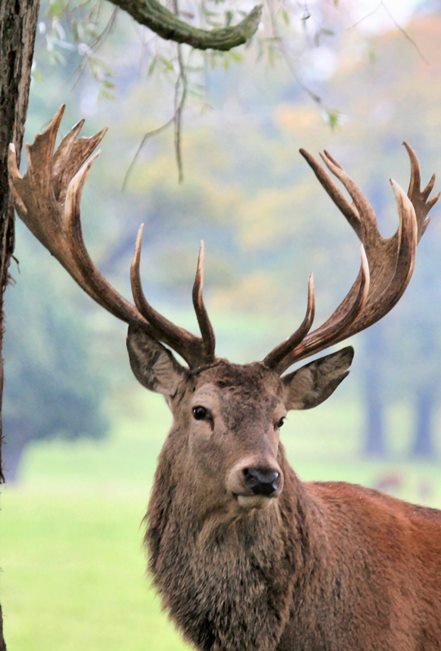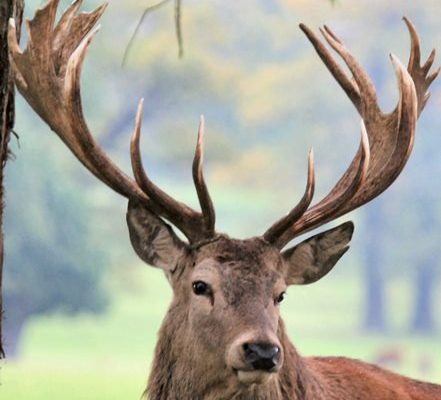
Think of it like navigating a new city without a map. You want to enjoy the adventure, but you also don’t want to get lost or, worse, end up in a tricky situation. Whether you’re out hiking, camping, or just enjoying a stroll through the woods, knowing how to handle an encounter with a stag can make your experience incredible rather than intimidating.
In this guide, we’ll walk through the steps on what to do if you encounter a stag in the wild. From understanding their behavior to knowing how to keep yourself—and the stag—safe, we’ll cover everything you need to know. So, grab your favorite cup of coffee, and let’s dive in!
Understanding Stag Behavior
Before you even think about what to do when confronted by a stag, it’s essential to understand a bit about their behavior. Stags are generally shy creatures and prefer to avoid human interaction. However, if they feel threatened or cornered, they might act defensively.
Stags usually roam in groups and can be seen during dawn and dusk when they’re most active. During this time, they might be grazing or just enjoying their surroundings. If you happen to cross paths with one, remember that their first instinct is to flee—not fight. However, if they perceive you as a threat, they might stand their ground.
It’s fascinating to watch their body language. A calm stag might have its head down, grazing peacefully, while an agitated stag could show signs of discomfort—like raising its head, snorting, or stomping its feet. If you notice any of these behaviors, it’s best to keep your distance and give them space.
Stay Calm and Assess the Situation
So, you’ve spotted a stag and your heart’s racing. It’s natural to feel excited, but staying calm is your best course of action. Take a deep breath and assess the situation. Is the stag alone or with a group? Is it grazing peacefully, or does it seem agitated?
When you encounter a stag, remember that they are wild animals, and their reactions can be unpredictable. If the stag appears calm and is merely observing you, it’s best to enjoy the moment from a safe distance. Occasionally, standing still and quietly observing can offer some of the best wildlife viewing experiences.
Here’s a tip: avoid direct eye contact, as this can be perceived as a challenge. Instead, glance at the stag from the corner of your eye, allowing you to keep track of its movements without alarming it.
Give the Stag Space
One of the most important things to remember in this situation is to give the stag plenty of space. Approach these encounters as if they were a conversation—if you get too close too fast, the stag may feel threatened.
If the stag is nearby, slowly and quietly retreat, maintaining a safe distance. Ideally, you want to be at least 100 yards away. This distance allows you to enjoy the view without putting yourself or the stag in danger.
If you’re in a group, make sure everyone is on the same page. Talk quietly and move away together to minimize disturbance. Remember, it’s a privilege to witness wildlife in its natural habitat, so be respectful.
Know When to Leave
You might be thinking, “Okay, I’ve spotted a stag, but when do I actually leave?” It’s crucial to recognize signs that indicate it’s time to move on. If the stag starts to stomp its feet or snort, these are clear indicators that it feels threatened.
In this case, it’s best to turn around and move away calmly. Avoid sudden movements or loud noises, as these could startle the animal and provoke a defensive reaction.
It’s also important to remember that stags are protective of their territory, especially during mating season. If you spot a stag with antlers in full display, be particularly cautious, as they can be more aggressive during this time.
Document the Encounter Responsibly
One of the best ways to remember your encounter with a stag is by documenting it. However, it’s essential to do this responsibly. If you’re tempted to take photos, make sure you’re at a safe distance first.
Use your smartphone or camera with a zoom lens to capture the moment without invading the stag’s space. Think of it like taking a picture of a beautiful painting from across the room—you wouldn’t want to walk up and touch it, right? Additionally, sharing your experience through photos or journals can inspire others to appreciate wildlife while respecting the creatures in their natural habitat.
Remember that many wildlife enthusiasts love to share their experiences, but always stress the importance of distance. Encourage safe viewing practices in your posts and conversations.
Educate Yourself on Local Wildlife
As you venture into nature, it’s helpful to educate yourself about the local wildlife, including stags. Understanding their habits, habitats, and safety protocols can enhance your outdoor experiences.
Research the types of stags in your area, such as red deer or sika deer, and learn about their specific behaviors. Knowing when they are more active or how to identify them can make your encounters more memorable and informative.
Additionally, many parks and wildlife organizations offer resources, workshops, or guided tours. Engaging with experts can provide valuable insights and increase your appreciation for these magnificent creatures.
Respect Nature and Wildlife
The bottom line is that respecting nature and wildlife is crucial. Stags, like all wild animals, play a vital role in the ecosystem. They deserve our admiration and protection, not only for their beauty but also for their contribution to maintaining the natural balance.
If you encounter a stag, embrace it as a reminder of the wildness that still exists around us. Instead of pushing the boundaries on how close you can get, focus on what you can learn from the experience. It’s all about connection—both with nature and with ourselves as stewards of the Earth.
In essence, your encounter with a stag can be a beautiful moment, full of wonder and respect. By keeping your distance, staying calm, and educating yourself along the way, you’ll not only enhance your own experiences but also promote a culture of mindfulness in nature.
So, the next time you find yourself in the wild, remember these tips. Approach each encounter with curiosity and respect, and who knows? You might just walk away with a story to tell for years to come.

